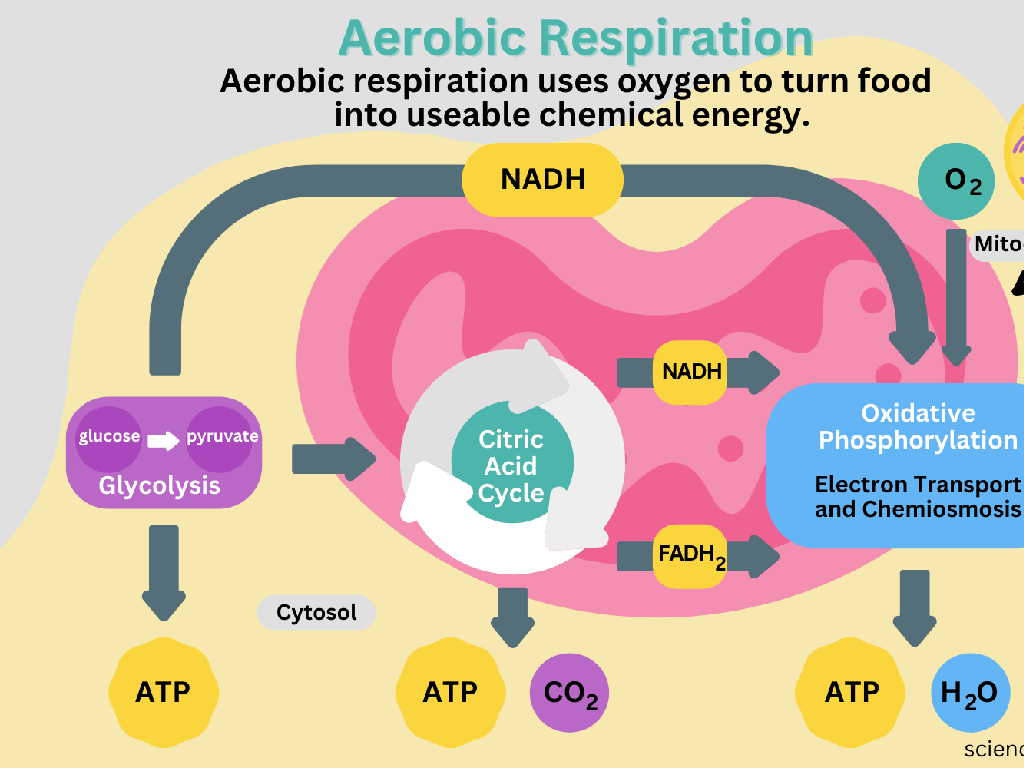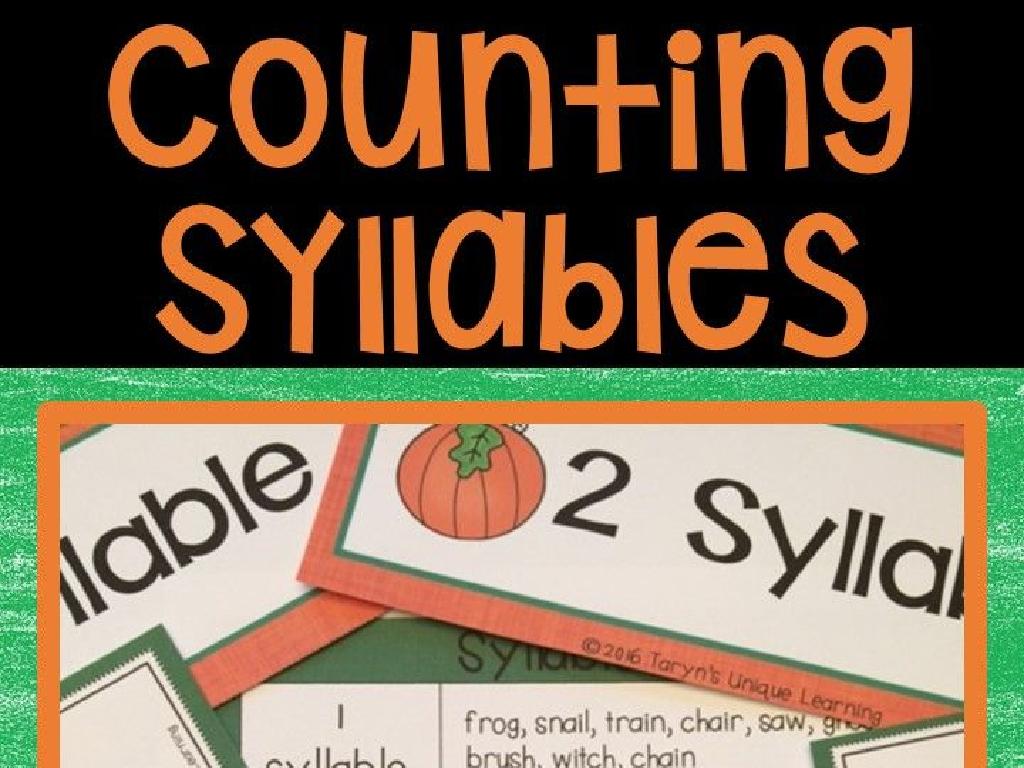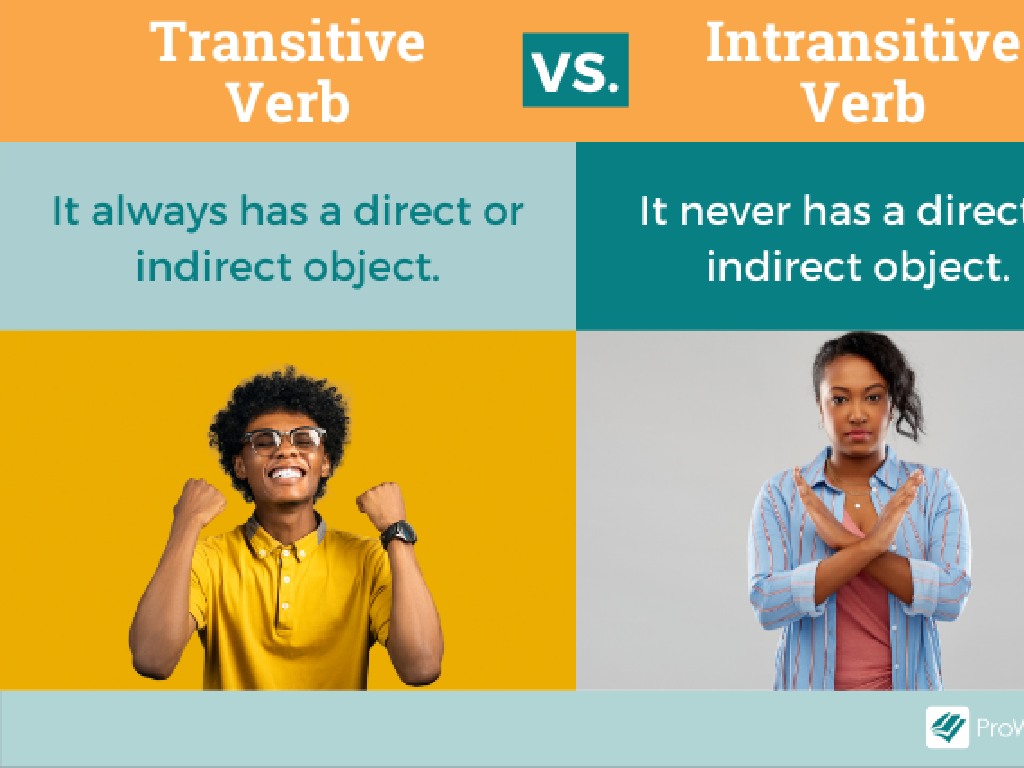Fewer, More, And Same
Subject: Math
Grade: Pre-k
Topic: Compare Groups
Please LOG IN to download the presentation. Access is available to registered users only.
View More Content
Math Adventures: Fewer, More, and Same
– Greet our little math explorers
– Introduce ‘Fewer, More, and Same’
– These are terms we use to compare quantities
– Comparing groups of items
– We’ll look at different groups and decide which has fewer or more items, or if they have the same number
– Fun activities ahead!
|
Begin the class with a warm and energetic welcome to capture the children’s attention. Introduce the concept of ‘Fewer, More, and Same’ in a way that relates to their everyday experiences, such as comparing the number of cookies on different plates or toys in various boxes. Explain that comparing groups helps us understand quantities and numbers better. Prepare to engage the students with hands-on activities where they can physically group and compare items, such as blocks or stickers, to reinforce the concept. The activities should be simple and interactive, allowing each child to participate and understand the idea of comparison in a tangible way.
Understanding ‘Fewer’ in Groups
– ‘Fewer’ means not as many
– Compare two groups of items
– Look at two sets, which has less?
– Use hands to show ‘fewer’
– Hands apart then one hand closer to show ‘fewer’
– ‘Fewer’ is less quantity
|
This slide introduces the concept of ‘fewer’ to Pre-K students. Start by explaining that ‘fewer’ means there are not as many items in one group compared to another. Show them two groups of items and ask them to identify which group has fewer items. Use hand gestures to visually represent the concept of ‘fewer’ by bringing one hand closer to signify a smaller amount. Reinforce the idea that ‘fewer’ indicates a lesser quantity of something. During the class, engage the students by asking them to compare different sets of objects and use their hands to show which has fewer. This tactile approach helps solidify the concept in a way that is understandable at their developmental level.
Let’s Find ‘More’!
– Observe two groups of items
– Understand ‘more’ means larger number
– ‘More’ is when one group has a greater count than another
– Use hands to show ‘more’
– Raise more fingers for the group with more items
– Practice with real objects
– Count items like blocks or crayons to see which has more
|
This slide is aimed at helping Pre-K students grasp the concept of ‘more’ through visual and physical interaction. Start by showing a picture with two distinct groups of items, such as apples and bananas, and ask the children to identify which group has more items. Explain that ‘more’ refers to a larger number of items in one group compared to another. Demonstrate the concept with hand gestures, raising a higher number of fingers for the group with more items. Encourage the children to practice with tangible objects like blocks or crayons to reinforce the concept. This hands-on approach helps young learners understand abstract concepts through concrete experiences.
Understanding ‘Same’: Comparing Quantities
– ‘Same’ means equal numbers
– Observe two groups with equal items
– Look at pictures, count items in both to see they match
– Clap hands to count equally
– Clap as we count items in each group
– Recognizing ‘same’ in groups
– Practice finding ‘same’ amount in different groups
|
This slide is aimed at helping Pre-K students understand the concept of ‘same’ as it relates to comparing quantities. Start by showing a picture of two groups with an equal number of items, and explain that ‘same’ means that there is no difference in the number of items in each group. To reinforce this concept, engage the students in a clapping activity where they clap their hands the same number of times as there are items in each group. This kinesthetic activity helps solidify the concept of ‘same’. Encourage the students to practice recognizing when two groups have the ‘same’ number of items in various scenarios, both in the classroom and in their environment.
Playing with Fewer, More, and Same
– Interactive game with item groups
– Show pictures with different numbers of items, ask which has fewer or more.
– Use fingers for counting
– If unsure, count out loud using fingers to find which group has more or fewer items.
– Praise participation warmly
– Clap and smile for all who participate, making them feel valued.
– Celebrate correct answers
– Give a cheerful clap for every right answer to encourage learning.
|
This slide introduces an interactive game designed for Pre-K students to understand the concepts of fewer, more, and same by comparing groups of items. Encourage the children to use their fingers to count the items in each group, reinforcing their counting skills. It’s important to create a positive learning environment by praising both participation and correct answers, using claps and smiles to motivate and reward the children. This activity not only teaches mathematical comparison but also boosts their confidence and participation in class.
Story Time: The Picnic Adventure
– Animals on a picnic story
– Imagine animals sharing food at a picnic
– Discuss more or fewer items
– ‘Who has more apples, the bear or the rabbit?’
– Engage with expressive tones
– Use different voices for each animal
– Pause for interactive questions
– ‘Does the squirrel have the same number of nuts as the owl?’
|
This slide introduces an interactive story-telling activity designed to teach Pre-K students the concepts of ‘fewer’, ‘more’, and ‘same’ through a picnic scenario. As you narrate the story, use different voice tones for each animal character to maintain engagement. Periodically pause the story to ask the children questions about the quantities of food items the animals have. For example, ‘Does the bear have more honey pots than the fox?’ or ‘Do the ants have fewer sandwiches than the raccoon?’ Encourage the children to observe and compare the amounts, fostering their understanding of quantity comparison in a fun and engaging way. This activity not only teaches math concepts but also enhances listening skills and participation.
Class Activity: Sorting Fun!
– Sort objects into groups
– Create groups with fewer items
– Fewer means not as many, like 2 apples vs 5 apples
– Make groups with more items
– More means a larger number, like 6 oranges vs 3 oranges
– Groups with the same number of items
– Same means equal, like 4 cookies in each group
|
This activity is designed to help Pre-K students understand the concepts of fewer, more, and the same by sorting objects. Provide a variety of objects for the children to sort, such as blocks, crayons, or small toys. Guide them to make one group with fewer items, another with more items, and a third group with the same number of items as another group. Encourage the children to count and compare their groups, reinforcing the concepts. After sorting, each child should present their groups to the class, explaining how they sorted the items. This will help them articulate their understanding and practice using the terms ‘fewer’, ‘more’, and ‘same’. As a teacher, be ready to assist and provide positive feedback during the activity.
Wrapping Up: Fewer, More, and Same
– Recap: Fewer, More, and Same
– Remember our apple and orange groups? Which had more?
– Ask: What did we learn?
– Cheerful Goodbye
– Let’s say goodbye with a fun math cheer!
– Anticipate More Math Fun
– Get excited for our next math journey!
|
As we conclude today’s lesson, it’s important to review the key concepts of comparing quantities using terms like fewer, more, and same. Use examples from the activities done in class, such as comparing groups of fruits or toys, to reinforce the learning. Engage with the children by asking them to share what they’ve learned, which helps in assessing their understanding and retention. End the class on a high note with a cheerful goodbye, encouraging the children to feel excited about continuing their math exploration in future lessons. This positive reinforcement helps to build a love for learning and anticipation for new math concepts.






